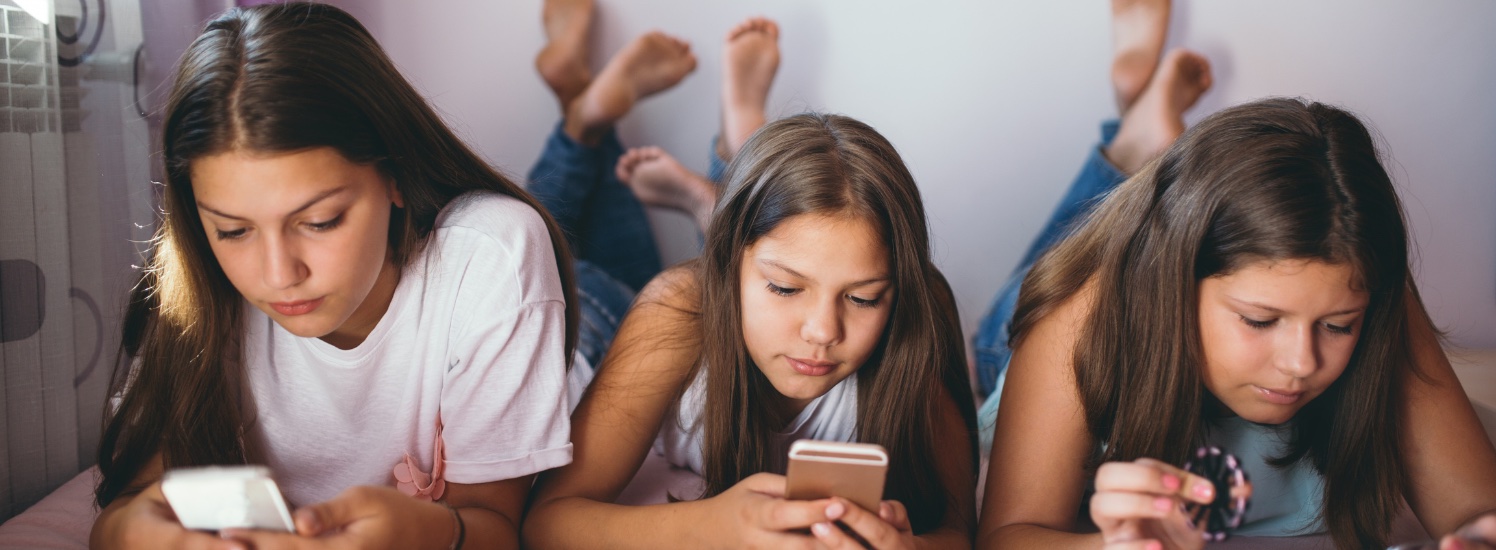Clarifying Gray Areas in Family Tech Use: Separating Red Herrings from Red Flags
As a clinical psychologist, I have the privilege and challenge of helping families communicate about and problem solve a myriad of concerns. These concerns typically involve academics, relationships, and, for the past several years, issues related to family screen time and use of technology in the home.
All too often, parents fall into one of two common traps while establishing balanced tech use in the home. First, out of understandable anxiety about their child’s wellbeing, they inadvertently investigate a false lead or “red herring” that doesn’t really get them anywhere. Questions like, “What if my kid is a screen addict?” tend to make the kid the problem, thus pre-empting an investigation of the greater context that offers clues about the real problem. Second, and in contrast, parents may appraise something as benign when in reality, it might carry a red flag. Conclusions like, “I don’t think I need to monitor what my kid is doing online,” may prove premature. The purpose of this post is to help parents determine whether they’re dealing with a red herring or a situation that might involve a red flag.
Of course, every situation is unique and embedded in a variety of circumstances. So interpret the considerations in this post as exactly that, rather than as recommendations or advice. With that, we begin. Do you think the following dilemmas are red herrings, or might they carry red flags? Could it be both?
Dilemma #1: Is technology inherently bad for the brain? Maybe I should just tell my kid to steer clear of it.
Let’s start with an analogy. Is tech as ostensibly bad for us as, say, cigarettes? Well that simplifies things pretty quickly: Most of us would answer, “No, it’s not. So I’m not going to banish tech from my house the same way I have outlawed cigarettes.” But to broaden the analogy, thereby approaching a more specific resolution to the dilemma, let’s consider the element of fire in some of its other forms. We haven’t outlawed all of those. Certainly, we cook or use a fireplace or roast marshmallows over a campfire.
How do we keep fire in those manifestations safe enough to be worth encountering the inherent risks? We do so by setting limits on the intensity and scope of the fire. A forest fire is dangerous because it’s out of control and destructive. A campfire that’s contained and supervised still carries risks, but its benefits, under those circumstances, outweigh them.
You can imagine the many ways we might apply a broad analogy like this one to help you determine how to help your child or teen manage their tech use. Your twelve-year-old daughter and her friends likely possess the judgment and reaction time to safely roast their own marshmallows at a campsite under your supervision. But you wouldn’t send your daughter alone into the woods at night and suggest she keep warm by lighting a pile of sticks and see what happens. So it becomes clearer that you probably shouldn’t nonchalantly let her slip up to her room alone to keep company with online “friends” and see what happens.
Do you catch my drift here? Sheesh. These situations come with high stakes. For parents, it might be really nice if the answer to our initial question were simply, “Yes. Tech is as dangerous as cigarettes.” Then our job would be quite straightforward— we would provide education and supervision designed to keep the kids far away from tech without impeding the development of their freewill. However, relevant research documents plenty of benefits of technology, all of which can be enjoyed when the risks are managed (Granic, Lobel, and Engels, 2014; Kuhn et al., 2014).
So Dilemma #1 ends up being more of a red herring. We won’t get very far demonizing technology in the same way that we would if we tried to demonize fire under the premise that cigarette smoking is unhealthy. But notice that the nuances that underlie Dilemma #1 are certainly fraught with red flags. Treating your kid’s unmonitored tech use as inherently benign is akin to playing with fire.
Dilemma #2
Is my kid ready for his own phone… a social media account… unmonitored text stream?
You might be thinking that once your kid is of legal age or physically powerful enough, Dilemma #2 is just a red herring— that it’s not an issue to spend time worrying about. Surely, under those circumstances, your child is going to get what he or she wants. But Dilemma #2 actually carries the possibility of many red flags. And even once your kid might have the legal right or the craftiness to access these privileges, consider who has to co-sign (or even pay!) the phone contract, buy the phone or other device, pay for the electricity to charge the device, manage the maintenance and updates, and so forth. If your kid gets all the privileges and you’re getting stuck with the bill and the responsibility, then there’s a red flag right there! In that arrangement, things are out of balance, even if your child is otherwise ready for some more independent tech use. Other questions you’ll want to research to help you resolve Dilemma #2 include:
- Does my child engage in high-risk behaviors?
- Do I have any evidence that my child poses a risk to him or herself or others?
- Would my child avoid telling me or another trustworthy adult if they or a friend were in danger?
- Do I catch my child lying about matters of safety?
- Does my child regularly hide what they’re communicating about with his friends from me?
- Is there a history of taking advantage of a privilege once they earn it?
Answering “yes” to any of these questions should give you pause. An affirmative answer is a red flag to help you prudently consider what “level” or “degree” of private access to these privileges your child is ready for.
In determining whether two common dilemmas are red herrings or whether they carry red flags, we’ve made some headway. But we’ve barely scratched the surface when it comes to clarifying gray areas vis-à-vis your child’s tech use. Check back with ChildNEXUS.com to read more in the weeks to come, when we’ll approach resolutions to several more tech dilemmas like: How do I moderate my child’s screen time when all of his assignments are online and they even have to be “handed in” electronically? In the meantime, read more in The Game Is Playing Your Kid: How to Unplug & Reconnect in the Digital Age.
Author:
Dr. Joe Dilley is a Los Angeles based psychologist in private practice who specializes in helping students balance their screen time with their academic responsibilities and social lives. He is the author of The Game Is Playing Your Kid: How to Unplug & Reconnect in the Digital Age.












